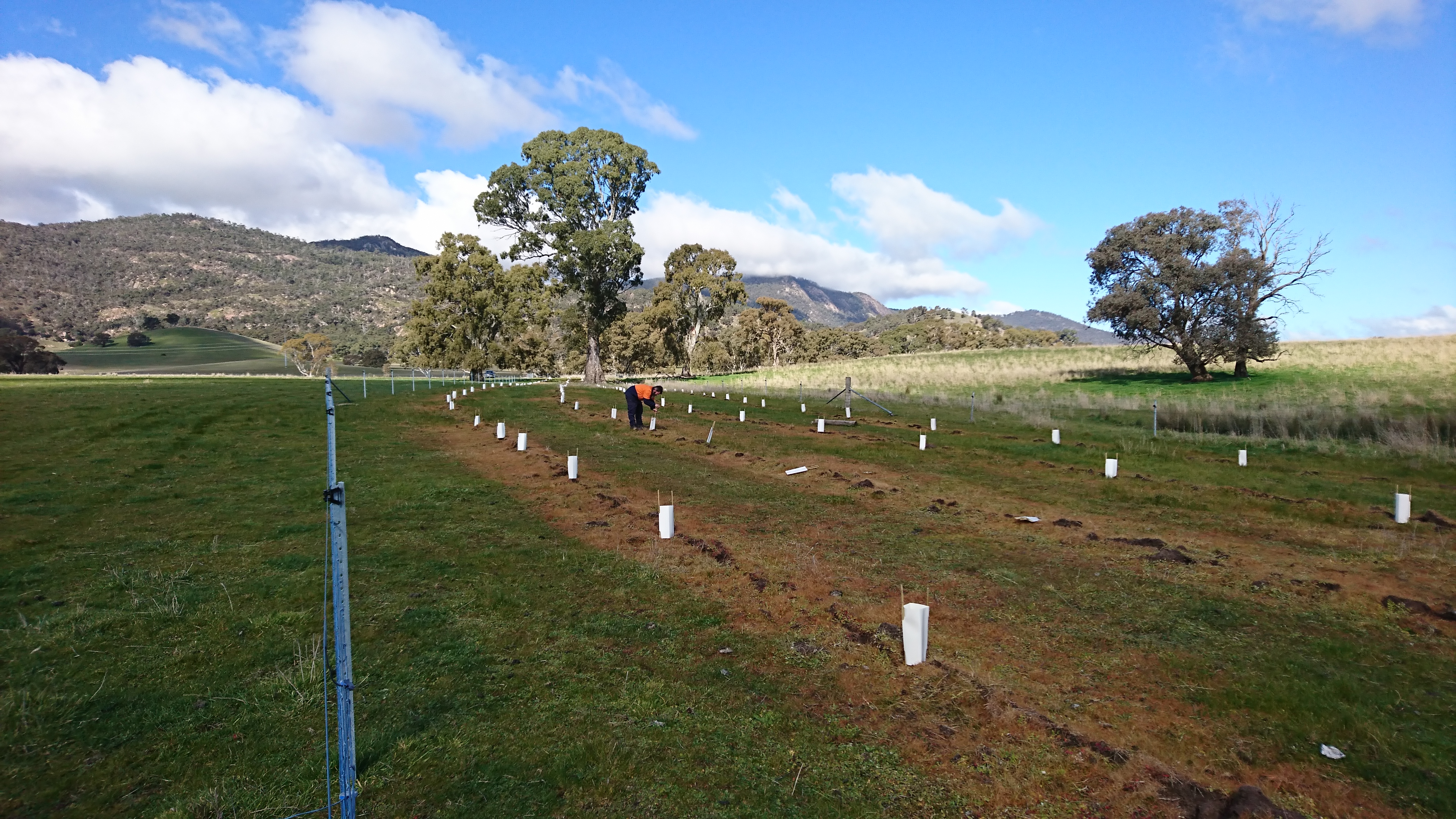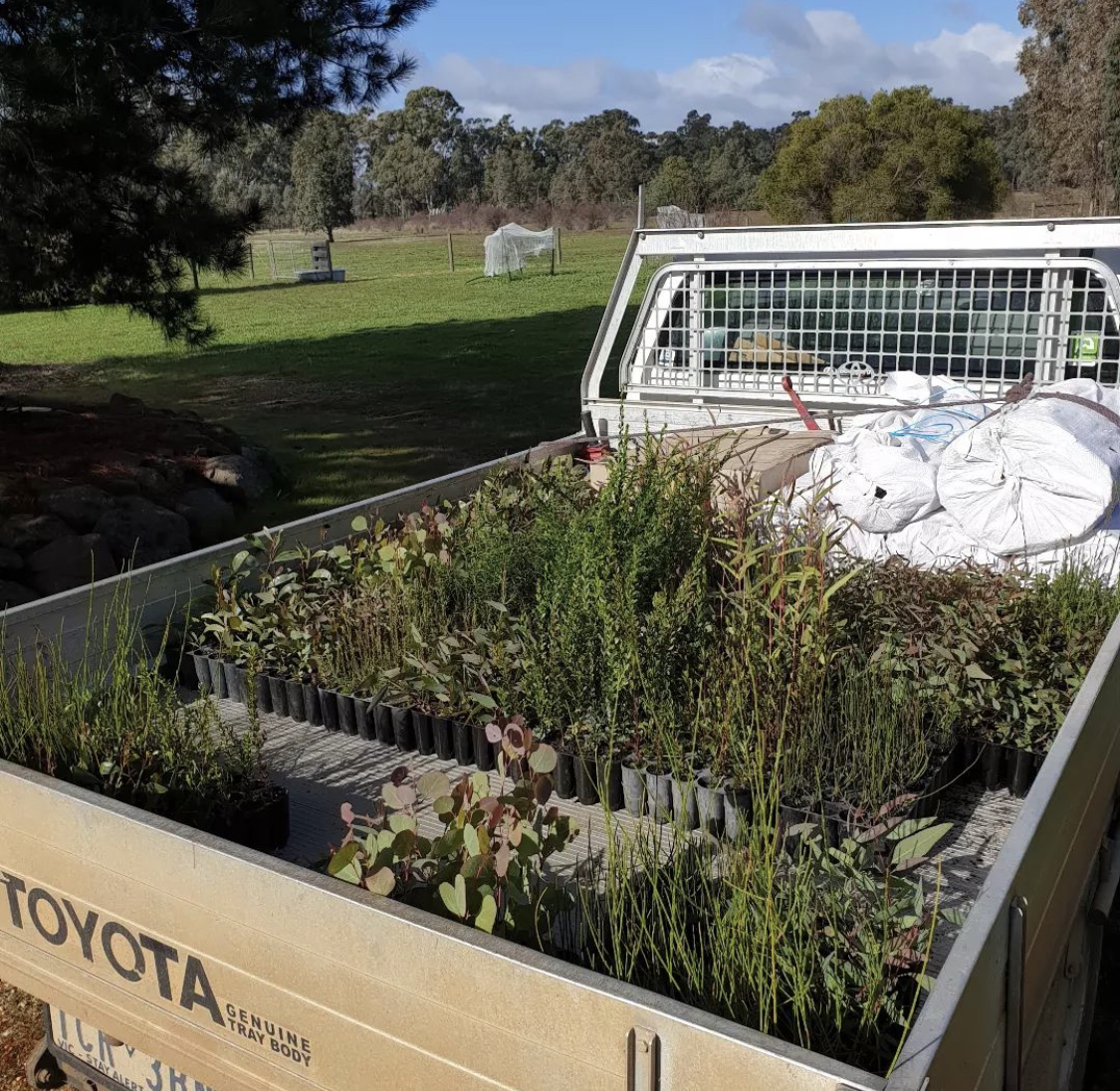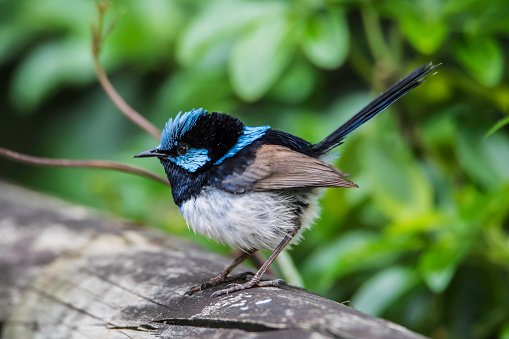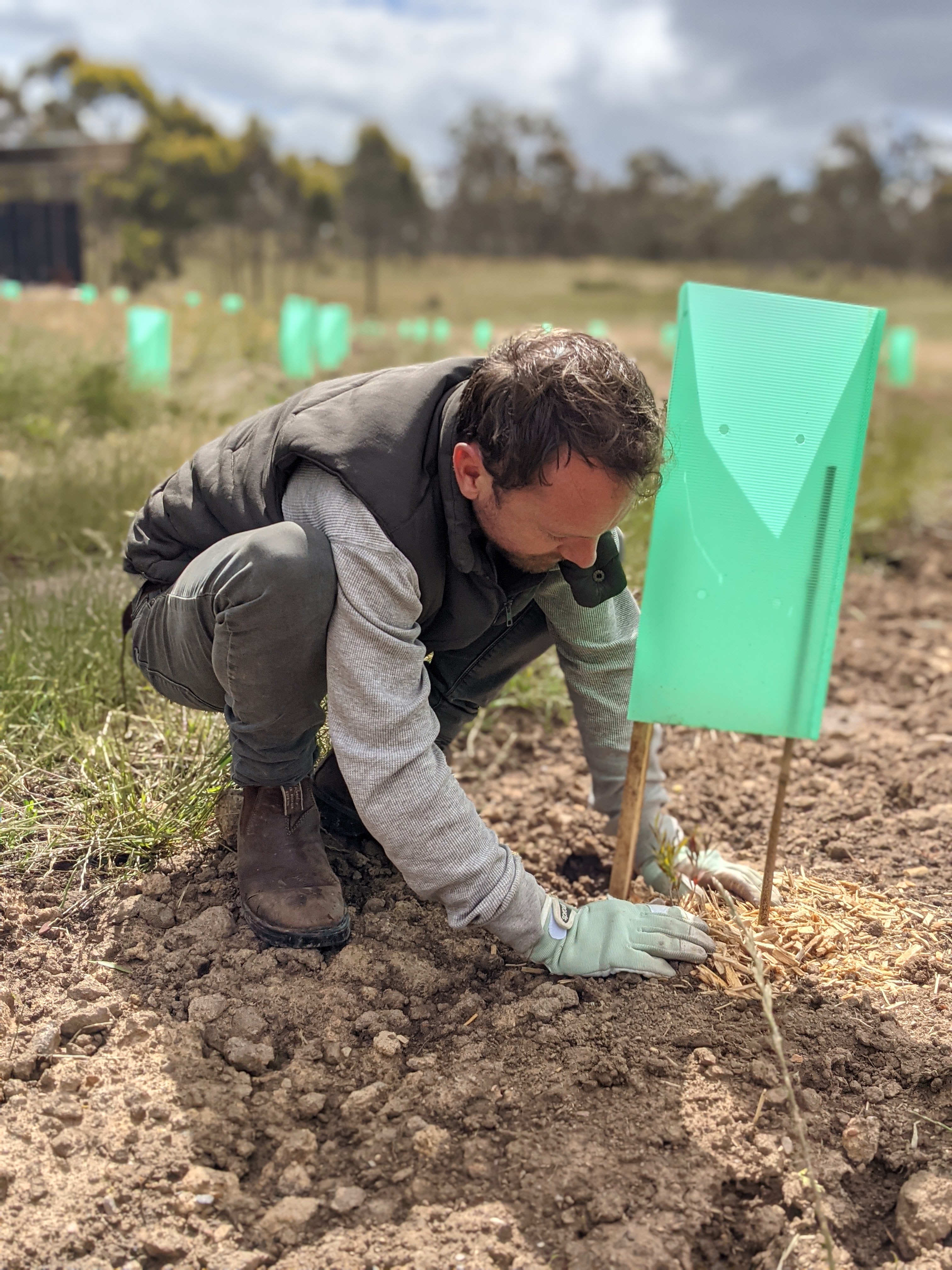October 4, 2023
|
GJG Ararat. Supporting local woodlands.
TREES PLANTED
540
G.J. Gardner Homes Ararat has been supporting our community tree planting projects since 2013, and in that time, we have planted 3,885 trees in the Ararat, Horsham and Hamilton Districts due to their generous support. That impressive number comes from G.J. Gardner planting 15 native trees for every new home built.

This year Ashley and Sally Heard and their team purchased 540 native trees for the Ararat region (Djab Wurrung country). The trees were planted at 2 sites (Pyrenees Highway and Sandy Lane) near Elmhurst, within the Upper Wimmera catchment in late winter by Platypus Project. Project Platypus is an Incorporated Association established in 1994 as an umbrella body for eleven Landcare Groups in the Upper Wimmera River Catchment.
Both these sites were historically areas of open woodland habitats, with either grassy or herb rich understories. However, at the time of the plantings, the sites were largely open pasture land with sparsely scattered eucalypt paddock trees. A mixture of large, medium and small trees were planted. Some of the species included: Golddust Wattle, Yellow Gum, Grey Box, Drooping Sheoak, Silver Banksia, Scarlet Bottlebrush and the magnificent River Red Gum.

Temperate eucalypt woodlands are one of the most iconic image for south-western Victoria, yet they are also some of the most degraded habitats in Australia, due in part to their high suitability as cropping and grazing lands. For some types of eucalypt woodlands, such as southwest Victoria’s grassy woodlands, we have less than 5% remaining.

Both sites had been heavily cleared in the past for grazing, and only had sparse paddock trees remaining. Thus the focus of these re-plantings were to reintroduce both a new canopy layer, as well as mid- and understory species. The trees planted as part of the new canopy provide the essential structure of the woodland, and will create new habitats for arboreal species. But understory is a key feature of woodland revegetation as well. Diverse understories play a variety of ecological roles – from slowing down surface rain run-off and thus reducing erosion and water quality declines caused by silt, to providing habitat and food sources for important links in food chains. For example, flowering plants in the understory are a major food source for nectar feeding critters including sugar gliders and a variety of insects which are themselves a key food source for birds and small mammals, which in turn support larger predators such as the threatened powerful owls.
Thank you very much G J Gardner Ararat for supporting your local woodlands! Your sponsorship has allowed Project Platypus to purchase 540 native plant seedlings, planted at 2 sites, that focused on restoring essential understory to degraded patches of what was once our iconic grassy and herb rich woodlands.
As these plants grow, they will provide the necessary ‘near to ground’ habitat and food sources for birds, insects and mammals, allowing many of our local iconic species, such as gliders and threatened powerful owls, to once again call those trees home. We are very grateful for your support and look forward to working together again in the future!
Elia Pirtle, Local Landcare Facilitator, Project Platypus
Thank you to Sally and Ashley for helping us support community groups such as Project Platypus who protect and enhance our rural reserves.
Writer: Colleen Filippa
With a background in Environmental Science, Colleen is the Founding Director of Fifteen Trees. In 2009, after 20 years in primary, secondary and tertiary education institutions, Colleen left the classroom to start the company. Fifteen Trees is a social enterprise assisting individuals and companies to reduce their carbon footprint by supporting community groups such as Landcare, schools and environmental networks.
RECENT TREE PLANTINGS
500 TREES PLANTED
100 TREES PLANTED
125 TREES PLANTED
SIGN UP FOR OUR MONTHLY UPDATES.
Restoring Australian ecosystems. Supporting communities with their revegetation projects for a greener and healthier planet.
Fifteen Trees acknowledges Indigenous Australians as the traditional custodians of the lands on which we work, live and play.
We recognise that Indigenous Australians have cared for and lived in harmony with this land for millennia, and their knowledge and wisdom of the land endures.
We pay our respects to Elders past, present and emerging and stand in solidarity as Indigenous Australians seek a fairer and more sustainable future for the land and its people.


